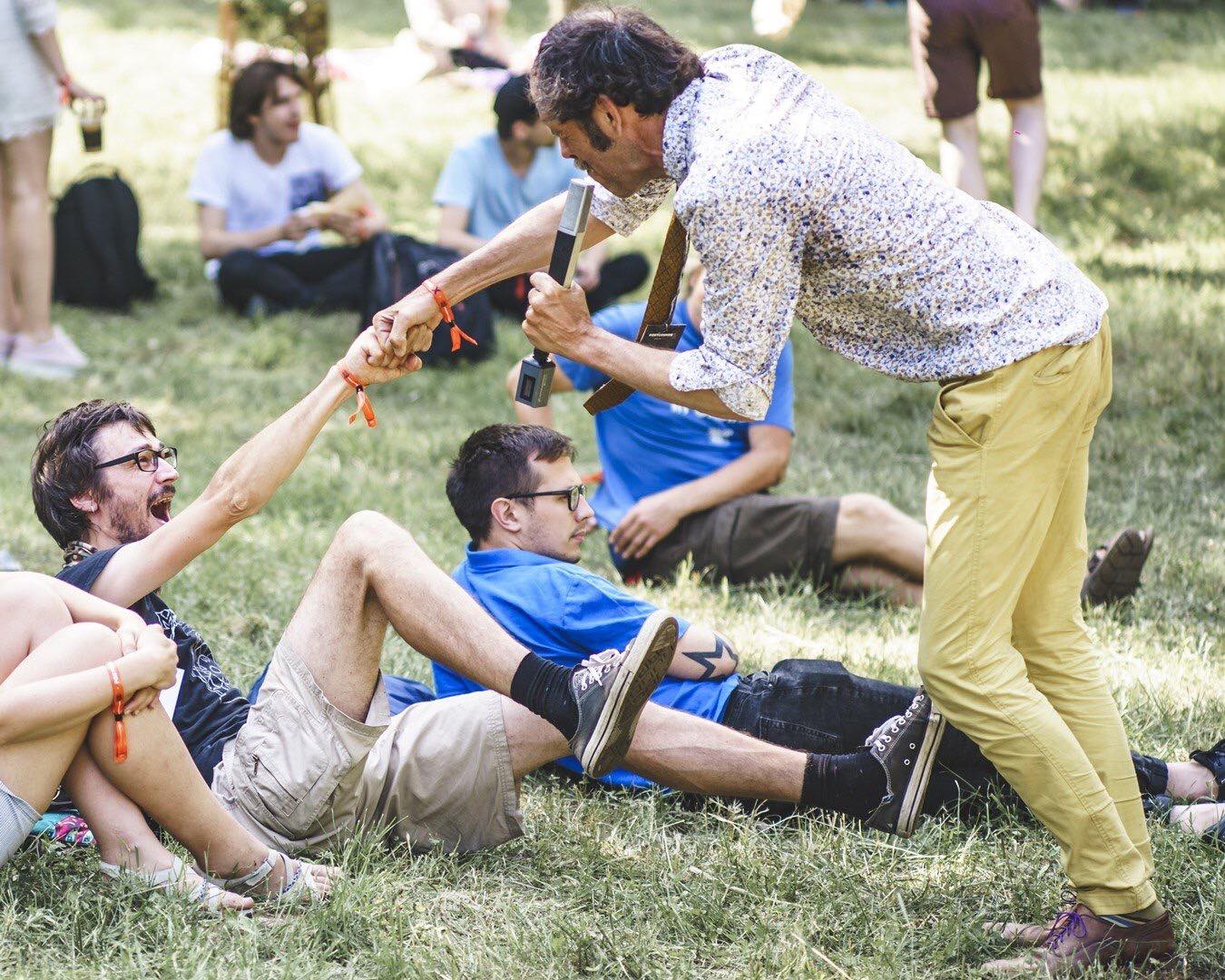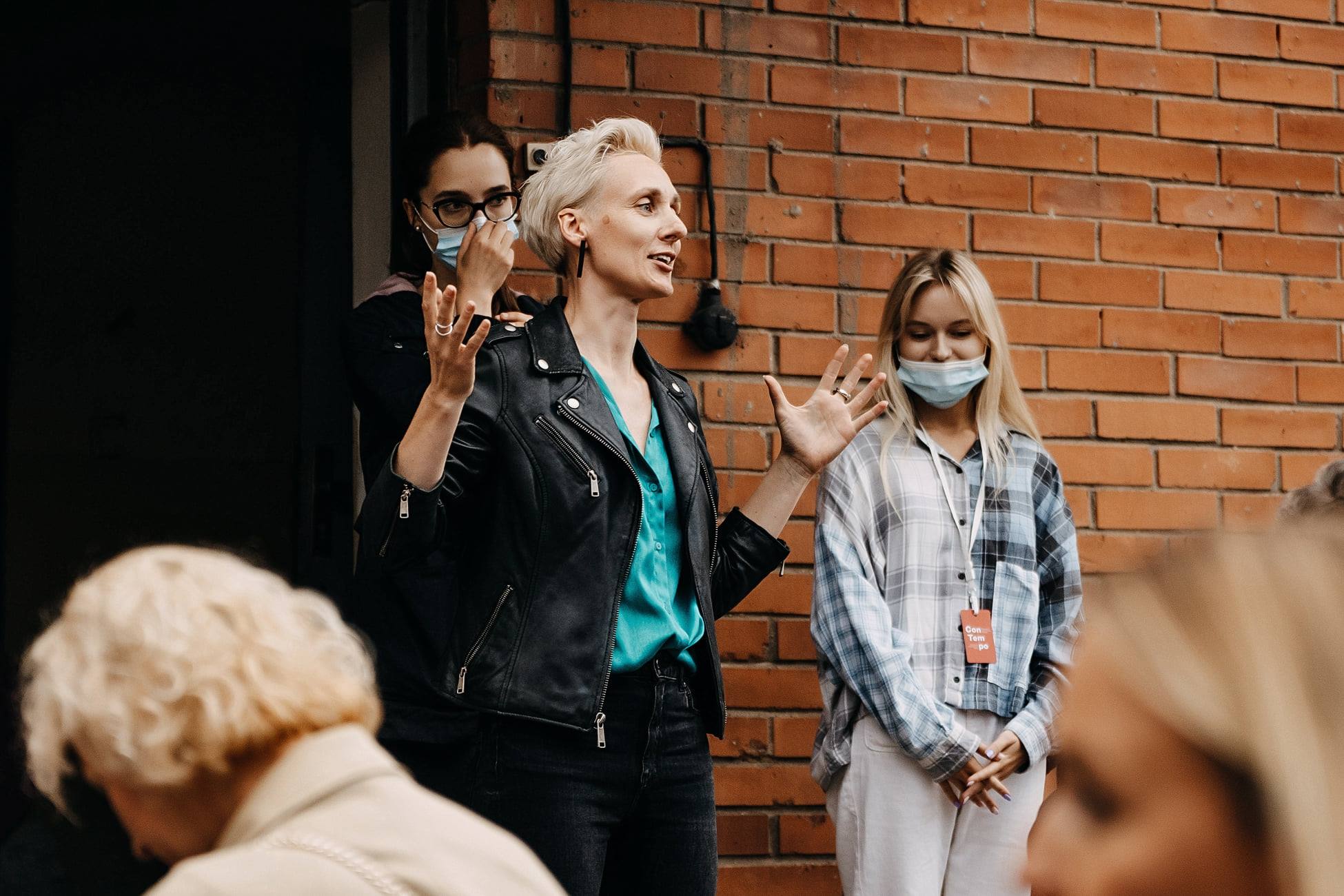-
Stories
Stories
-

Zan Hoffman
We need to be sensitive to the fact that people want to be entertained, but they don't want you to tear their head off ; the message is useless if you've made someone unhappy.
Zan Hoffman
We need to be sensitive to the fact that people want to be entertained, but they don't want you to tear their head off; the message is useless if you've made someone unhappy.
So, what you need to do is you need to bring people on board and not push them away. We can accomplish a lot by being dynamic, and a dynamic when you're just constantly hitting hard loses its effect and gets exhausting.
I think it's very exciting to play across different parts of Europe because we're all different. So, I'm playing in Belgium once and my musician friends say, "oh, the Belgians are the worst, they're so cold and they're so uninterested in your stuff", I said "for you, maybe".
It's our job to be able to have enough dynamics in our material to adjust it when you recognize how the audience is reacting. If I'm in America, I punch a little harder because we like that but in Lithuania, people are just not going to join in. They're like "no, I'm not even playing this game of yours".
I think it's exciting as an artist to recognize that we've got the power to work with different audiences and it's a matter of checking out how your material does; I'll skip songs when I realize this isn't working here. We can learn, and this is the exciting part of our craft.
-
How to get feedback from the community
- Take a closed cardboard box and cut a small rectangle at the top.
- Write on the front of the box: VOTE: would you like to see this here?.
- Cut-up pieces of paper.
- Draw an illustration of the work you want to make on a large piece of paper.
- Go to the location you want to do the work with the box, pieces of paper, pen and illustration.
- Arrange everything in an easy-to-see spot and leave it there.
- Come back after 24 hours and count the votes.
-
How to stay responsive to the reactions of audience members
- Go to a busy public space where there is a lot of foot traffic.
- Decide the parameters of the space to create a finite zone (e.g. from that tree until that lamppost).
- Mirror the movements of a person walking across the space until they leave the finite zone. Be as detailed as possible, down to the movements of the face and fingers.
- Repeat step 3 until you forget who you are.
-
-

Dovydas Laurinaitis
When I was getting ready to do my performance on the trolleybus, the main concern I heard from my friends was that I was going to get beat up.
Dovydas Laurinaitis
When I was getting ready to do my performance on the trolleybus, the main concern I heard from my friends was that I was going to get beat up. I also didn’t know whether I was allowed to do this performance; this was at the beginning of the second year of the pandemic when masks were still mandatory, and I was wearing a plastic bubble on my head instead.
I was also unsure whether I needed to seek permission from the transport authority. I did it anyway. Performance art interrupts, subverts, criticises; seeking permission felt disingenuous to these aims, so I did it waiting to be told otherwise, which never happened.
I did get thrown out one day by the bus driver, after an hour. He filmed me and shouted at me, telling me I was disturbing everyone. I was mainly having conversations with people, which I didn’t realise was so controversial. The few passengers on board joined in and told me "We don’t want you here!".
I found these reactions fascinating, as in spite of what they were saying, these audience members shared so much of themselves with me.
-
How to connect with difficult audience members
- Calmly look them in the eyes until they look away.
- Ask: Why did you look away?
- Continue gently asking why? after everything they say until they stop answering.
- Repeat steps 1–3 until you’re both smiling.
-
How to accept the potential consequences of your work
- Make a list of all the potential consequences of performing this work on a piece of paper.
- Rip the paper in half, crumple and mould each half on your ears.
- Go for a walk and ask people on the street what they think of your ears.
-
-

Gintarė Masteikaitė
When working with performing arts projects in public spaces, I am looking for creators who can adapt to the environment, its rhythm and the local people of that particular space
Gintarė Masteikaitė
When working with performing arts projects in public spaces, I am looking for creators who can adapt to the environment, its rhythm and the local people of that particular space. The creators’ sensitivity to the environment, preparation for surprises and respect for the local community are very important. All this makes the performance accessible to both the environment itself and the local community or observers.
However, it is important to keep in mind that when performing in public spaces, one must evaluate the safety of this environment and be prepared not only for changing weather conditions or ambient sounds, but also for the unexpected reactions or interactions of the audience, congestion of people, animals and their reactions.
Although, I have a lot of confidence in both the audience and the artists. When creating a performance, the curators and even the actors themselves assess the potential risks and make appropriate decisions in the event of a dangerous situation. Of course, none of us is safe from an accident. Viewers are also conscious, usually watching the performances from a safe distance, with caution and attention to the changing situation, supporting the artists.
-
How to treat a performance site with respect
- Go to the performance site and collect any loose material you can find (leaves, litter, rocks, etc.).
- Arrange the material into an altar (whatever that means for you) with enough space in the middle for you to sit.
- Sit in the middle of the altar and close your eyes. Listen closely to the sounds of the space, the rhythm of passing bodies, changes in weather.
- Continue step 3 until you become friends with the space.
-
How to embrace unpredictability when performing
- Notice how your body reacted to the surprise event.
- Repeat this reaction through movement, experimenting with the intensity of the action, its duration, where it is in the body, the emotion with which you move.
- Continue step 2 until you feel that you’ve exhausted all possible ways to repeat this action.
-
-
Storybook 
I want to create something in public space.
Storybook User Guide
Select one of the stories, and dive deeper into the challenges presented by clicking on the hyperlinked phrases.
Some instructions concern the process of making, while others offer advice for dealing with situations during the performance of the work.
The instructions are provided for individuals, but can also be done in a group.


 User Guide
User Guide
 Back to Description
Back to Description
